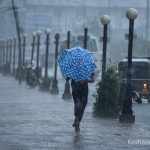Devastation and destruction being witnessed due to the cloudburst in Chisoti hamlet of Kishtwar district of Jammu during the Machail Yatra must awaken the pilgrims and the administration from the self-imposed slumber. Time has come to internalize that all is not well with the approach being adopted for the management of the pilgrimages in the Himalayan regions. This is not confined to the Union territory(UT) of Jammu and Kashmir alone but extends to all the Himalayan states that host the yearlong pilgrimages. The dreadful scenes that are being witnessed on social media and the newspapers from the ground zero in Chisoti make it clear that we are not yet prepared for the smooth management of pilgrimages to such highly vulnerable terrains. Death toll has officially crossed fifty with the eye witnesses saying that the toll is going to increase as the large number of people are missing. This tragedy has to be analyzed from all sides . No doubt the lack of preparedness for this type of disaster is certainly responsible for the increase in the number of casualties but the people who have traveled from various places in Jammu and other areas with infants are equally responsible for the number of casualties. The terrain is arduous and difficult and as such the rationale of taking along the newly born infants and children to such a highly vulnerable place is indeed an immature act. At the time of writing this editorial there are reports of flash floods in Kathua too . Thus it is clear that there is a drastic change in the climatic patterns . Time has come to take stock of the situation. There is a need to make an immediate risk assessment of the pilgrimage centers located in the vulnerable and difficult terrains that include Shri Amarnath Ji, Mata Machail, Shree Mata Vaishno Devi Ji and many more such places. The mountainous track and the presence of the sources of water bodies in such locations along the track make these centers highly risk prone, especially when the season is rainy and unpredictable. Administration must brainstorm and devise methodology to minimize and mitigate the impact of natural disasters on the pilgrims so that precious lives are saved. There is a need to decentralize the disaster management in these pilgrim centers so that time lag is reduced when there is a need for rescue operations on ground zero . Another important thing that has come to the fore is that whenever a natural disaster strikes and causes havoc, the political leaders rush to the spot and cause disruption of the rescue work . This has been witnessed at the tragic spot of Chisoti. Advisories must be issued by the administration that restricts the VIP movement to the disaster site. Instead the facilitation of the rescue operations and volunteers from various organization must be encouraged so that precious lives are saved.It is not the time to score the brownie points but the situation demands that political leaders and civil administration facilitates the rescue operations at their levels enabling the people to seek relief from this grave tragedy.At this time whole Jammu and Kashmir is united to rescue and save its citizens.This incident must make us wiser and the government must strictly monitor the pilgrimage to vulnerable destinations. Pilgrimage centers are not the spots of mass tourism.
Nature’s Fury in Chisoti

Sign Up For Daily Newsletter
Be keep up! Get the latest breaking news delivered straight to your inbox.
By signing up, you agree to our Terms of Use and acknowledge the data practices in our Privacy Policy. You may unsubscribe at any time.
Leave a Comment Leave a Comment







